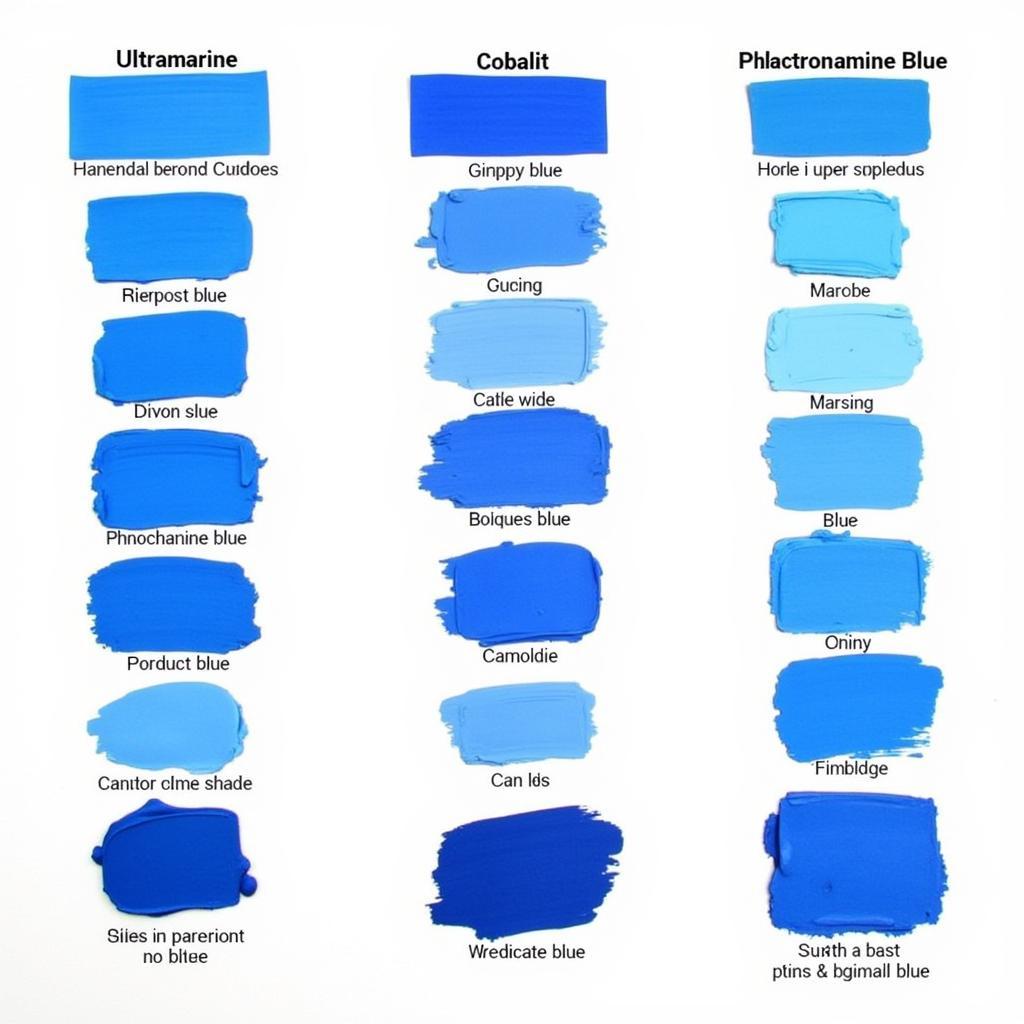Understanding how to mix colors to create blue is a fundamental skill for any artist, designer, or even DIY enthusiast. Whether you’re painting a wall, creating a digital illustration, or just curious about color theory, knowing what color mixed with red makes blue can open up a world of creative possibilities.
Decoding the Mystery of Blue: Is it a Primary Color?
Yes, blue is a primary color. This means you can’t create it by mixing other colors. Primary colors are the foundation of all other colors we see. Think of them as the building blocks of the color world. Red and yellow are the other two primary colors. Mixing these primary colors in various combinations gives birth to secondary colors like green, orange, and purple.
What if I Want Different Shades of Blue?
While you can’t create pure blue from other colors, you can create different shades and tints of blue by mixing it with other colors. This allows for a huge range of blues, from the deep navy of a twilight sky to the pale azure of a summer’s day. Adding white to blue creates lighter tints, such as sky blue or baby blue. Adding black to blue creates darker shades like midnight blue or navy.
How to Make Blue-Green
Mixing blue and green creates a tranquil blue-green, often referred to as teal or aqua. The exact shade will depend on the ratio of blue to green. More blue will result in a shade closer to blue, while more green will pull the color towards a greener hue. You can further adjust the shade by adding white for lighter versions or black for darker versions. Think about the vibrant turquoise of a tropical ocean – that’s the magic of blue and green together.
Exploring the World of Blue Pigments
There are many different blue pigments used in paints and dyes, each with its own unique properties. Ultramarine blue, for instance, is a rich, deep blue derived from the semi-precious stone lapis lazuli. Cobalt blue is another popular choice, known for its vibrant, intense hue. Phthalocyanine blue, on the other hand, is a more recent synthetic pigment that offers excellent lightfastness. Understanding the characteristics of these different pigments can help you achieve specific effects in your artistic endeavors.
What Color with Green Makes Blue?
It’s important to remember that no color mixed with green will create blue. Green itself is created by mixing blue and yellow. Adding green to blue will simply shift the color toward green, resulting in shades like teal or turquoise as mentioned earlier. For a more detailed explanation, you can refer to this article: what color with green makes blue. This resource offers a deep dive into color mixing principles.
“Understanding the color wheel is paramount to effective color mixing,” says renowned color specialist, Amelia Hues. “Recognizing the relationships between colors allows for predictable and stunning results.”
 Exploring Blue Pigments in Paint
Exploring Blue Pigments in Paint
Conclusion
While you cannot mix colors to create pure blue because it’s a primary color, understanding how blue interacts with other colors allows you to create a stunning array of blues, each with its own unique character. Remember, blue is the foundation; explore, experiment, and unleash your creativity with the endless possibilities this vibrant color offers. Check out our article which color makes blue for further exploration.
FAQ
- Is blue a warm or cool color? (Cool)
- What are some common shades of blue? (Sky blue, Navy, Teal, Azure)
- What is the opposite of blue on the color wheel? (Orange)
- Can you mix blue with red to create purple? (Yes)
- What color mixed with blue makes green? (Yellow)
- What is the difference between a tint and a shade of blue? (A tint is made by adding white to blue, while a shade is made by adding black.)
- How can I make khaki color? (You can find out how to make khaki color.)
Common Scenarios
- Scenario 1: A customer wants to achieve a specific shade of blue for their living room walls. We guide them through the process of adding white or black to pure blue to create the desired tint or shade.
- Scenario 2: An artist wants to create a realistic seascape. We help them understand how to mix blue and green to achieve various shades of turquoise and aqua for the ocean.
- Scenario 3: A designer needs to choose the right blue pigment for a textile project. We advise them on the different properties of various blue pigments, such as ultramarine and cobalt blue.
Further Exploration
- Explore the impact of blue in interior design.
- Learn about the psychological effects of the color blue.
- Discover the history and symbolism of blue in different cultures. what color mixed with green makes blue
Need help with your color journey? Contact us! Phone: 0373298888, Email: [email protected], or visit us at 86 Cầu Giấy, Hanoi. We have a 24/7 customer support team.
